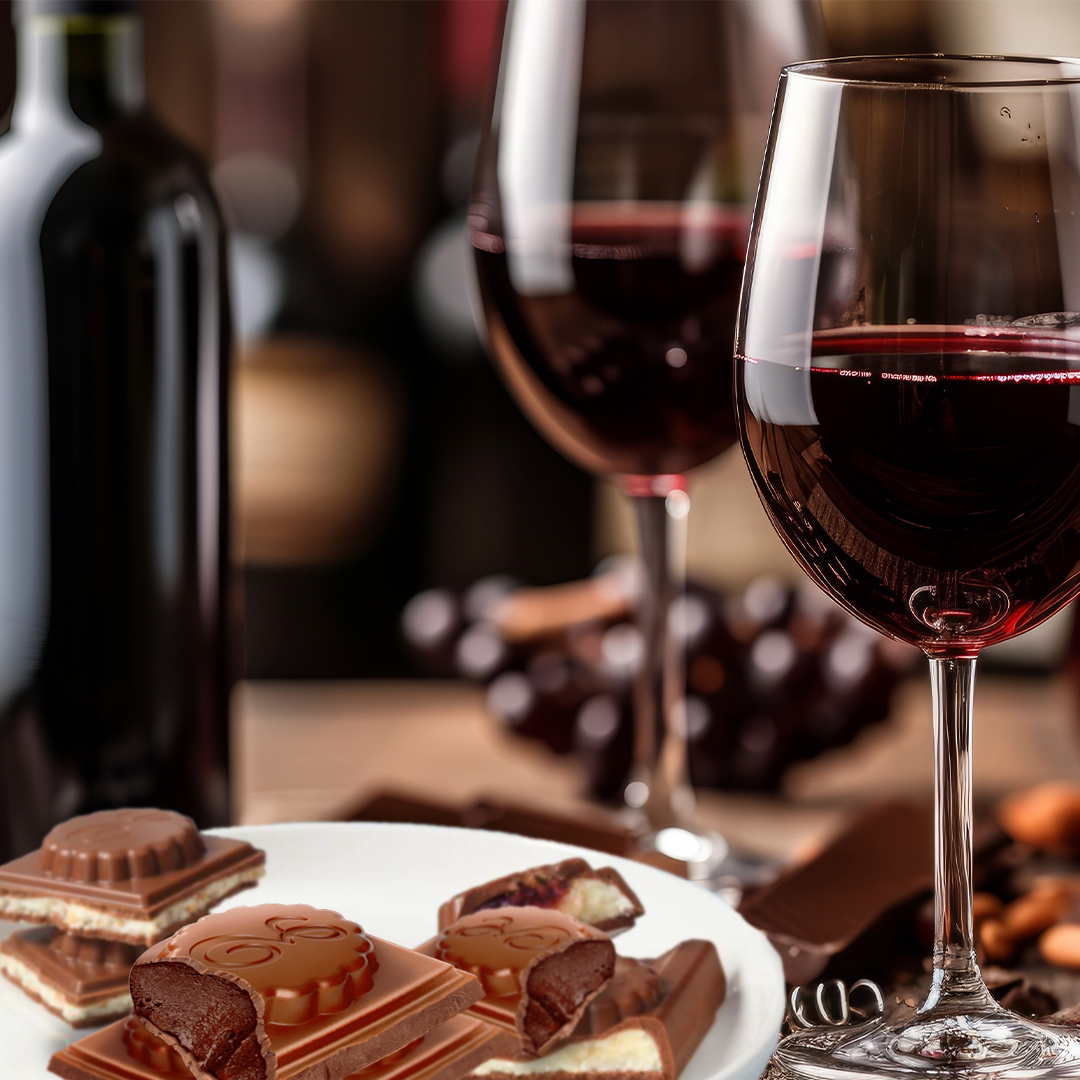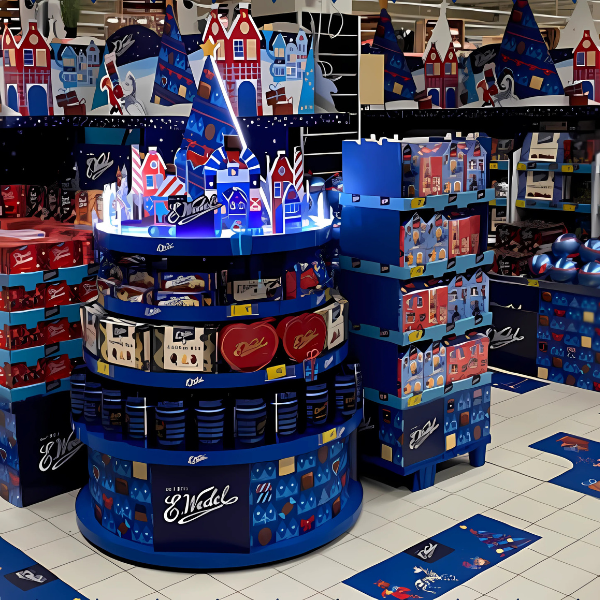How does secondary placement boost E.Wedel sales?
In the highly competitive FMCG (Fast-Moving Consumer Goods) market, strategic product visibility is a key driver of sales performance. For an iconic brand like E.Wedel, synonymous with premium Polish chocolate, enhancing visibility through secondary product placement has proven to be not just a marketing tactic but a sales accelerator.

So, what does secondary placement mean in retail environments, and how does it translate into measurable success for E.Wedel? Let’s take a closer look at how this smart, shopper-centric approach supports and boosts the brand’s market presence.
What is secondary placement?
Secondary placement refers to the strategic positioning of products outside their primary category shelf. This can include displays at checkout counters, promotional stands in high-traffic areas, or seasonal end caps near complementary goods.
For E.Wedel, secondary placements can be found:
- Near coffee aisles or tea shelves, especially with E.Wedel chocolate tablets: milk, extra milk, dark or dark with filling.
- At front-of-store displays, featuring novelties such as Creamy Milk and Creamy Dark chocolates, as well as heart-shaped pralines.
- On promotional gondolas, during holidays or seasonal sales (e.g., summer promotions).
- In refrigerators, offering ready-to-consume chocolate drinks, frozen Ptasie Mleczko®, or pralines.
- At checkout zones as impulse-purchase items, especially countlines like Bajeczny or Pawełek, or non-chocolate treats such as Halva or AHA! sesame bars.

This tactic is particularly effective in the confectionery sector, where consumer decisions are often spontaneous and emotion-driven.
Increased visibility = increased impulse purchases
E.Wedel chocolate products often benefit from high impulse purchase rates. Consumers might not enter a store intending to buy chocolate, but strategic secondary placement changes that.
By positioning E.Wedel products near checkout lines or beverage aisles, the brand captures attention at crucial moments. For example:
- A shopper buying coffee might be tempted by E.Wedel dark chocolate or pralines as a perfect pairing.
- At checkout, compact E.Wedel bars or chocolate-covered fruits serve as appealing last-minute indulgences.
This unplanned purchase behavior significantly lifts basket value and boosts unit sales, especially when supported by eye-catching displays or limited-time offers.
Cross-merchandising opportunities
 Secondary placement opens doors for cross-merchandising, which builds associations between E.Wedel chocolates and complementary products. Some successful combinations include:
Secondary placement opens doors for cross-merchandising, which builds associations between E.Wedel chocolates and complementary products. Some successful combinations include:
-
Milk chocolate placed near breakfast cereals or spreads to reinforce it as a morning or snack item.
- Pralines like heart shaped Creamy or From the heart placed near wine or sparkling drinks to position them as a gourmet gift or evening treat.
- Fruit-filled bars displayed beside yogurt or fruit juices to encourage sweet-but-refreshing snacking moments.
- Ptasie Mleczko in promo bundle with cappuccino combines soft and foamy textures.
These strategic placements subtly shape consumer perception, turning E.Wedel from a “treat” into a lifestyle staple.
Seasonal promotions and thematic displays
E.Wedel’s product range lends itself well to thematic and seasonal merchandising. Placing chocolate pralines in Valentine’s Day gift zones or white chocolate near Easter displays leads to increased brand engagement.
Seasonal placement also creates a sense of urgency: limited-edition packaging, summer-themed displays, or holiday bundles invite customers to act quickly. During holidays, stores often grant brands like E.Wedel additional display space due to their high gift appeal, which naturally leads to sales spikes.
Importantly, these displays are visually appealing and create a wonderful atmosphere in the store, making consumers feel the magic of the season and purchase chocolate more emotionally.

Enhancing brand recall and loyalty
The more often a customer sees a brand, the more likely they are to remember it and trust it. Secondary placements work as visual reminders, increasing familiarity and boosting top-of-mind awareness.
For example, a shopper who sees E.Wedel chocolate bars in multiple locations within a store, such as the standard aisle, a small ¼ pallet display and the checkout stand, builds a subconscious connection with the brand. Over time, this repeated exposure leads to stronger loyalty and higher repurchase rates.
Crucially, secondary and multi-placement increase brand sales and drive overall category growth in-store.
Targeting multiple shopper missions
Retailers often categorize shopping trips into missions: top-up trips, planned weekly shops, or quick grab-and-go visits. E.Wedel benefits from secondary placement because it targets all three.
-
For quick visits, E.Wedel impulse products like small bars or chocolate snacks are ideal.
-
For planned purchases, placing E.Wedel gift boxes or multi-packs in holiday sections ensures visibility.
- For top-up shopping, cross-merchandising with beverages or baking products makes it easy to add chocolate to the cart.
This flexibility in shopper targeting allows E.Wedel to maximize its relevance across consumer needs.
Data-driven success
 Retailers and E.Wedel’s trade marketing teams closely monitor the performance of secondary placements. The impact is clear in data:
Retailers and E.Wedel’s trade marketing teams closely monitor the performance of secondary placements. The impact is clear in data:
-
POS (Point-of-Sale) systems often show even up to 50% sales lift when E.Wedel products are part of secondary displays.
-
Conversion rates are higher when chocolates are placed near beverage refrigerators or seasonal displays.
- In stores running special gondola placements during promotional periods, E.Wedel regularly sees double-digit increases in unit sales.
This data supports reinvestment in secondary placements across key locations, confirming their ROI.
Strengthening retailer partnerships
From a business perspective, E.Wedel's use of secondary placement strengthens its relationship with retailers. By investing in well-designed displays, co-branded POS materials, and data-driven promotional cycles, E.Wedel becomes a high-performing partner.
Retailers benefit from increased category sales and better shopper experiences. In turn, they are more willing to grant prime secondary placement spots to E.Wedel across seasons.
Smart placement, stronger sales
In today’s competitive retail landscape, excellent product quality alone is not enough. E.Wedel’s success is built not only on tradition and flavor but also on retail execution.
Secondary placement acts as a silent salesperson, inviting consumers, nudging decisions, and creating memorable shopping moments. From increasing impulse buys and cross-sell potential to enhancing brand recognition, this strategy is essential for sustained sales growth.
For E.Wedel, secondary placement isn’t just a marketing tactic - it’s a core part of how the brand continues to sweeten its market position and satisfy customers in every aisle.
